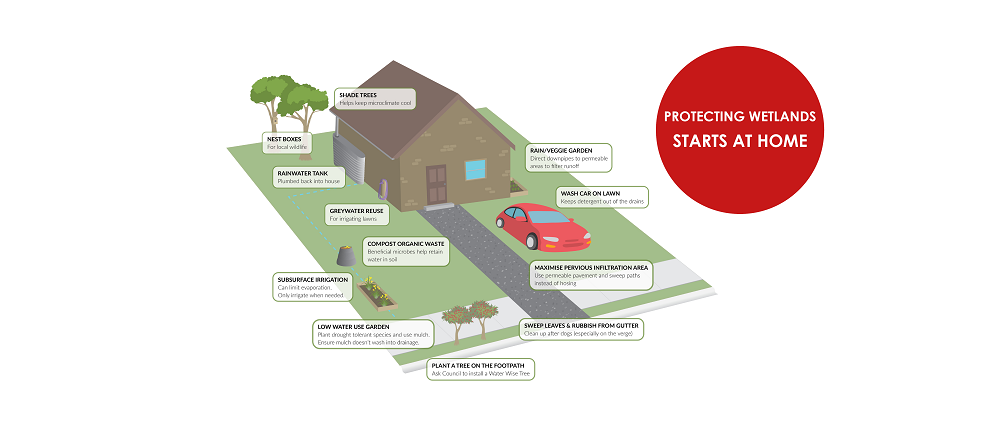
World Wetlands Day: What you do in your backyard can protect our wetlands
This World Wetlands Day (2 February) we are encouraging South East Queenslanders to take time out to look at simple things every household can do to protect these vital but threatened areas.
All living things depend on wetlands and we have an enormous wetland of global significance right here in our backyard.
Australia has been a frontrunner in efforts aimed at halting the global loss of wetlands and conserving and protecting those that remain.
Australia was one of the five founding nations to sign The Convention on Wetlands of International Importance (the Ramsar Convention) which came into being on 2 February 1971, 50 years ago today to the day. This was a landmark moment for wetlands, and the start of a global movement to raise awareness about the vital role they play for people and our planet.
South East Queensland is home to one of the world’s most iconic wetlands, the Moreton Bay Ramsar site. It covers a significant area of more than 120,000 hectares and provides vital habitat for animals and plants, including many that aren’t found anywhere else. The Moreton Bay wetland site supports more than 50,000 wetland birds and a high diversity of marine mammals and provides a habitat for more than 750 species of fish.
Download a copy of the Water Wise House fact sheet.
Essential water and nutrient filtration system
Wetlands are areas of land where water covers the soil all year or just at certain times of the year and include swamps, billabongs, and mangroves (to name a few).
They deliver important ecosystem services that contribute to our wellbeing including:
- Providing clean water,
- Protecting our shores from wave action,
- Reducing the impacts of floods, and
- Improving water quality by filtering pollutants.
Action needed now: easy things everyone can do at home
Unfortunately, we are facing a crisis – we use more freshwater than nature can replenish, and we are destroying the ecosystem that water and all life depend on most – Wetlands.
Development and urban run-off, littering, changes in the climate, and invasive species continue to threaten the health of our wetlands which in turn impacts the quality of our water, poses risks to multiple endangered species, and threatens our valuable biodiversity and ecosystems.
It’s not too late to make changes – there are lots of things you can do at home to help protect wetlands, including our very own internationally important Moreton Bay Ramsar site.

What you can do to help:
- Buy eco-friendly products – Too many nutrients are bad for our waterways, look for ‘NP’ (No Phosphorus) laundry soap and ‘greywater safe’ products.
- Be conscious of your consumption – Everything has a water footprint. Explore ways to minimise your water consumption through the food you buy, for example, organic and plant-based foods.
- Limit food waste – This is better for your wallet and better for the environment.
- Choose natural fibres – The more synthetic clothes we buy the more microplastic is released during washing, clogging up our creeks.
- Take care what you flush – Don’t flush wet wipes or non-biodegradable items down our sewerage system.
- Invest in water-saving fixtures – For example taps, toilets, dishwashers, and washing machines.
- Dispose of chemicals carefully – Don’t put oils, paints, or solvents down the drain.
- Avoid using weed killer before the predicted rain.
- Join a local catchment care group. Here is a handy list.
If you would like to know more about the Moreton Bay Ramsar site and how you can be involved in its conservation and protection send us an email at



